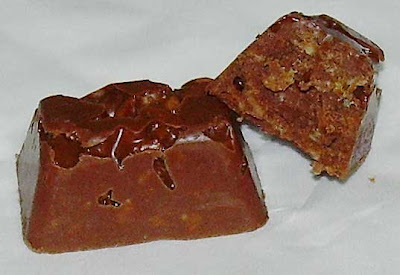
There is a whole category of snacks in Japan that are marketed as accompaniments to alcohol. Since this is a country where alcohol is an important social lubricant that allows stoic salary men to let loose on a regular basis, one can say that alcohol operates as a socially sanctioned therapist opening cathartic floodgates and letting the tension pour out.
These types of snacks to accompany alcohol are called "otsumami" in Japanese. They range from little whole dehydrated fish to strips of squid to chips and pretzels. I've seen the scarier bits hanging in convenience stores and liquor shops for years, but am not brave enough to chow down on dried fish as they stare back at me with their dead eyes. Pretzels, on the other hand, can hardly be offensive.

Pretz are just pretzel sticks presented plain or with flavoring. I'd say they were a savory rip-off of Pocky, but they're both made by the same company so it's not exactly theft. Also, this is a pretzel stick. It's a pretty basic concept that cannot be claimed as original to any particular company. This particular variety of Pretz has 6% cheddar cheese in it and I'm going to say that that's not nearly enough. When you open one of the two foil packets in the box, you smell a fairly strong cheesy flavor, but the smell doesn't translate into much cheese taste. They're also not incredibly salty.
All in all, they're not a bad pretzel experience, but not a spectacular one. The back of the box makes mention of the fact that there is pepper on them, but there is very little and it doesn't make much of a difference in taste. There is also Sucralose in these. In fact, there seems to be a lot of artificial sweetener in Japanese snacks for reasons I can't understand.
Japanese-made pretzels are no different than Western-made ones. They just cost a little more, are lighter in color, come in smaller portions and have less salt. Each box comes with two 31-gram (1 oz.) foil packets that will set you back 139 calories. If you're hot for some pretzels, these will do you fine, but don't expect any serious cheesy goodness to come along with them. I guess if you're getting potted and blowing off steam about the boss, you're probably not all that concerned about how much serious cheddar flavor you're going to get on your nosh.




































